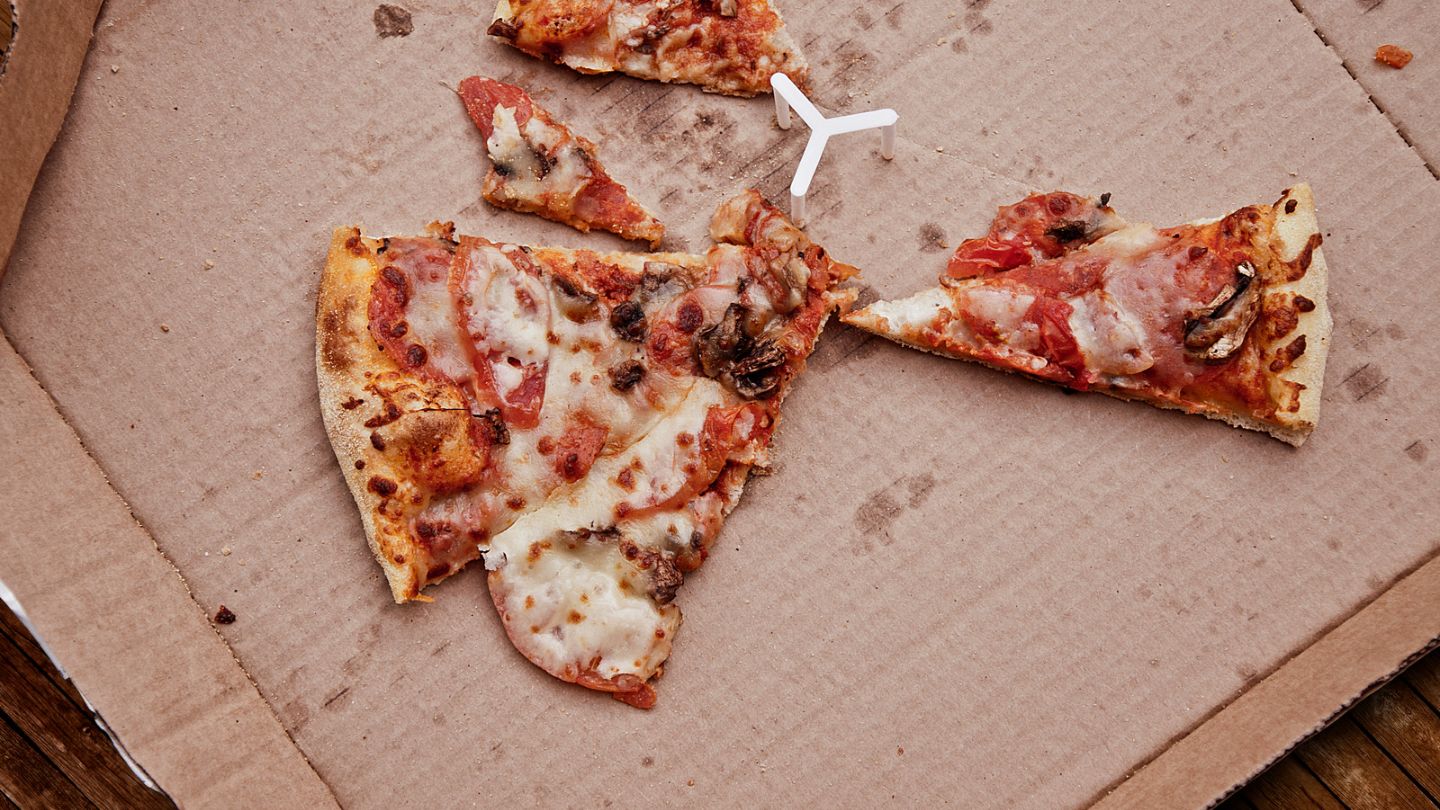How Long Is Leftover Pizza Good For
When it comes to pizza, everyone has their own opinion or preference. Some people like fresh-out-of-the-oven pies while others prefer the convenience of cold leftovers. The real question is, how long can you expect your leftover pizza to last without compromising its quality? Whether you plan on savoring a slice or two the next day, freezing them for later use, or simply stocking up on cold pizza from your local pizzeria – understanding how long leftover pizza is good for should be an essential part of deciding when and how to enjoy this classic comfort food. So, keep reading our blog post to learn about the importance of properly storing your leftover pizza and tips on extending its shelf life.

What is leftover pizza?
Leftover pizza is, quite simply, any pizza that has been left over or stored after being cooked. This can include food that was served at a restaurant or party, purchased from a take-out shop, or made in the home. It’s important to note that while leftover pizza is tasty and often enjoyed by many people, it can also be less safe than fresh pizza if proper storage and handling techniques are not followed.
When you’re ready to enjoy your leftover pizza, make sure that you reheat it thoroughly before eating. Place the slices on a microwave-safe plate and heat for one minute per slice. You can also place the slices on a baking sheet and pop them into a preheated oven set to 350 degrees Fahrenheit until they become crispy again.
Leftover pizza is still safe to eat as long as it hasn’t been sitting out too long (no more than 4 hours) and has been properly stored in the refrigerator afterwards. The most important thing when dealing with leftovers is proper storage and handling techniques; with this in mind, you can enjoy your leftovers with peace of mind.
How long is leftover pizza good for?
Leftover pizza is generally safe to eat for up to 4 days after it’s cooked as long as it has been properly stored in the refrigerator. If you plan on eating your leftover pizza after four days, make sure to freeze it and consume within two to three months.
As with any food product, always be aware of the risks associated with consuming leftovers and follow safety guidelines when handling and storing them. Enjoying leftovers can save money and reduce waste – just make sure that you store them safely and reheat thoroughly before consuming!
It’s also important to note that while leftover pizza may not look as appetizing or taste as good as a freshly baked pie, it is still safe to eat as long as proper storage and handling techniques are followed. Leftovers can be just as delicious when reheated or used in recipes such as pizza casserole, pizza rolls, breakfast pizzas, and more. There are so many possibilities with leftover pizza; you just have to get creative. Ultimately, the choice is yours – either enjoy your leftovers or donate them to those in need. Either way, it’s important to remember that following safety guidelines will ensure that everyone enjoys their food safely.
How can leftover pizza be stored to maintain its freshness longer?
To maintain the freshness and taste of leftover pizza, make sure it is stored correctly in an air-tight container or bag. Place the slices on a paper towel before transferring them to the storage container so that excess moisture can be absorbed. Make sure to store any leftover sauce separately from the pizza in a separate container as well. Additionally, leftovers should always be stored at 40 degrees Fahrenheit or below, therefore it’s important to place the food inside your refrigerator immediately after cooking. When it comes to eating leftovers, make sure to reheat thoroughly before enjoying for best results.
Storing leftover pizza in the fridge:
When it comes to storing leftovers like pizza, it is best to cool them quickly before refrigerating. Pizza should never be kept out for more than four hours before transferring it to the refrigerator; this will help prevent bacteria from growing on the food. To keep your leftover pizza as safe as possible, it should be stored in an airtight container and kept refrigerated at 40 degrees Fahrenheit or colder.
Storing leftover pizza in the freezer:
If you plan on eating your leftover pizza after four days, make sure to freeze it and consume within two to three months. To do this, wrap the slices in heavy-duty aluminum foil or place them in an airtight container before transferring them to the freezer. When ready to eat, thaw the pizza in the refrigerator for 24 hours or until it is completely defrosted before reheating.
Simply following these guidelines can help ensure that everyone enjoys their food safely and stops wasting money on food that will go bad quickly. Enjoying leftovers can be a great way of saving money while reducing waste!. So don’t be afraid to get creative with your leftovers – just remember to store and handle them correctly.
How do I reheat leftover pizza?
Reheating pizza is a fairly simple process. The best way to reheat pizza is in the oven or on the stovetop so that it can retain its crispy and delicious flavor.
First, preheat your oven to 350 degrees Fahrenheit. Place your slices directly on the oven rack and heat for about 10 minutes or until the cheese has melted and turned bubbly. If you’re using a skillet, place it over medium-high heat for about 5 minutes, flipping halfway through. If you have multiple slices of pizza, it’s best to stack them on top of each other while heating as this will help retain moisture and prevent drying out.
Microwaving is also an option but be aware that this method can cause the pizza to become soggy. To reheat pizza in the microwave, place the slices on a plate and heat them for about 30 seconds or until the cheese has melted.
Finally, if you’re only reheating one slice of pizza, try toasting it in a toaster oven – this will help maintain its crispiness while giving it an extra crunch.
No matter how you choose to reheat your leftover pizza, always be sure that it has reached an internal temperature of 165 degrees Fahrenheit before eating. This is important in order to ensure that any bacteria have been killed off so that everyone enjoys their food safely.
Reheating Refrigerated Pizza:
If you have pizza leftovers stored in the refrigerator, it’s best to reheat them in either the oven or on the stovetop. Preheat your oven to 375 degrees Fahrenheit and place the slices directly on an oven rack. Heat for about 8 to 10 minutes or until heated through and the cheese has melted. If using a skillet, heat over medium-high heat for about 5 minutes, flipping halfway through.
Reheating Frozen Pizza:
Frozen pizza should be defrosted before reheating so that it can cook evenly throughout. To do this, thaw the pizza in its packaging at room temperature for about 2 to 3 hours or until it is completely defrosted. Once thawed, preheat your oven to 375 degrees Fahrenheit and cook the slices for about 8 to 10 minutes or until the cheese has melted. You can also use a skillet over medium-high heat if you prefer, but make sure to flip the pizza halfway through cooking.
What other ways to reheat leftover pizza?
In addition to the oven and stove top methods, you can also reheat pizza in an air fryer, in a skillet or a toaster oven.
Reheating pizza with an air fryer:
If you have an air fryer, reheating leftover pizza is easy and fast. Preheat the air fryer to 375 degrees Fahrenheit and cook the slices for about 3 to 5 minutes or until warmed through. This method of reheating can help preserve moisture in your pizza slices without causing them to become soggy.
Reheating pizza in a skillet:
Another great way of reheating pizza is in a skillet. Heat a non-stick skillet over medium-high heat and place your slices directly on it. Cook each side for about 2 minutes or until heated through and the cheese has melted. Be sure to flip the slices halfway through cooking so they don’t burn on one side.
Reheating pizza in a toaster oven:
For those with a toaster oven, simply preheat the oven to 350 degrees Fahrenheit and place your slices directly on the rack. Heat for about 5 minutes or until heated through and the cheese has melted. This method will also help keep your pizza slices crispy while still giving them an extra crunch.
No matter which method you choose, make sure that your leftover pizza has reached an internal temperature of 165 degrees Fahrenheit before consuming.
FAQs
Can you still eat unrefrigerated pizza that is five days old?
No, it is not safe to eat 5 day old pizza that has not been refrigerated. Pizza is perishable and should be eaten within 2 or 3 days of being cooked if stored in the fridge or within 1 or 2 hours of being cooked if left out at room temperature. Eating pizza that has been stored at room temperature for more than 2 hours increases your risk of food poisoning. Additionally, because bacteria grows rapidly when food is kept at temperatures between 40 and 140 degrees Fahrenheit, eating pizza that has gone beyond this time frame can put you at risk of contracting a foodborne illness. For these reasons, it is best to discard any leftover pizza that has been sitting out for more than two hours.
How can you know when a pizza is bad?
When it comes to determining if a pizza is bad, the best way is to look for signs of spoilage such as mold, discoloration, or a strange odor. If you see any of these warning signs or your pizza has been left out at room temperature for longer than two hours, it’s best to discard it and make a new one.
There is visible mold or any fuzziness: Mold is a sign that food has gone bad, so if you see any on your pizza it should be discarded immediately.
It smells sour or off: If the pizza has an unpleasant odor, then it’s likely gone bad and should not be eaten.
It’s discolored: If the cheese or other toppings look different than usual, then the pizza may have gone bad.
It’s been sitting out at room temperature for more than two hours: Perishable food left at room temperature for too long can be dangerous to eat, so make sure to discard any leftover pizza that has been sitting out this long.
Additionally, if you’ve had the pizza stored in the refrigerator for more than four days, it’s best to throw it away as well since bacteria can begin to grow after this amount of time.
It’s also important to note that while reheating leftover pizza may help reduce the risk of foodborne illness due to bacteria growth, eating spoiled pizza can still cause food poisoning.
Can you freeze pizza?
Yes, you can freeze pizza. Pizza is a great dish to make ahead and freeze for later use, so it’s a great way to ensure that you’ll always have something delicious on hand when needed. To freeze pizza, simply wrap each slice in plastic wrap or aluminum foil and place them in an airtight freezer bag or container. The pizza will keep for up to 3 months in the freezer. When ready to eat, just heat it up directly from frozen either in the oven or microwave, or enjoy it cold! Be sure to let your frozen pizza thaw completely before heating it up – otherwise the crust may become soggy.
Can you reheat leftover pizza?
Yes, you can reheat leftover pizza. While reheating leftover pizza may help reduce the risk of foodborne illness due to bacteria growth, it is still important to be aware of the time that has passed since the pizza was cooked and stored. If you’ve had the pizza stored in the refrigerator for more than four days, it’s best to throw it away as eating spoiled pizza can still cause food poisoning. To reheat your leftover pizza, preheat your oven to 350 degrees Fahrenheit and place slices on a baking sheet. Bake for 8 to 10 minutes or until the cheese is melted and the crust is golden brown. Alternatively, you can also microwave your pizza for 1 to 2 minutes or until it’s hot all the way through.
How long do pizza leftovers last in a box?
Pizza leftovers should last for up to four days in a box stored in the refrigerator. It is important to note that while reheating leftover pizza may help reduce the risk of foodborne illness due to bacteria growth, eating spoiled pizza can still cause food poisoning. If you’ve had the pizza stored in the refrigerator for more than four days, it’s best to throw it away as eating spoiled pizza can still cause food poisoning. Additionally, if you’ve had the pizza stored at room temperature for longer than two hours, it’s best to discard it and make a new one as perishable food left at room temperature for too long can be dangerous to eat.
After seven days in the fridge, is pizza still edible?
No, pizza is not safe to eat after seven days in the fridge. PPizza should be consumed within one to two hours if left out at room temperature or within two to three days if stored in the refrigerator because of its perishability. Pizza that has been in the fridge for more than four days increases your chance of becoming sick from eating. Additionally, eating pizza that has passed this point increases your chance of getting a foodborne disease since bacteria quickly multiplies when food is held at temperatures between 40 and 140 degrees Fahrenheit. Because of these factors, it is preferable to throw away any leftover pizza that has been kept in the refrigerator for more than a week.
Can eating pizza left out overnight make you sick?
No, eating pizza left out overnight will not make you sick as long as it has been properly stored. It is important to remember that foodborne bacteria can grow rapidly between the temperatures of 40 to 140 degrees Fahrenheit and should never be left at this temperature for more than two hours. Therefore, if your pizza has been left out at room temperature for longer than two hours it is best to discard it to prevent any potential health risks. Additionally, when reheating leftover pizza, always be sure that it has reached an internal temperature of 165 degrees Fahrenheit before consuming.
Finally, remember to store leftover slices in an airtight container and place them in the refrigerator within one hour of baking or purchasing them. This will help keep them safe and enjoyable for a few days.
What happens if you eat old pizza?
Eating old pizza can make you sick, as it may contain harmful bacteria that can lead to food poisoning. Foodborne illnesses such as salmonella, E. coli, and listeria can be caused by consuming spoiled or contaminated food.
Salmonella: Salmonella is a bacterial infection that can cause symptoms such as nausea, vomiting, abdominal pain, and diarrhea. It is usually spread through the consumption of food or drink contaminated with animal feces.
- Coli: E. coli is another type of bacteria that can cause food poisoning. Symptoms include stomach cramps, fever, nausea, vomiting, and diarrhea.
Listeria: Listeria is a bacteria that can cause serious illness in pregnant women and those with weakened immune systems. Symptoms of listeria include fever, muscle aches, headache and gastrointestinal problems such as nausea and vomiting.
If you think you may have consumed old pizza or any other spoiled food products it’s important to seek medical attention as soon as possible.
Conclusion
All in all, it is important to be mindful of how long your pizza has been sitting out. If you want to enjoy your slice without risking food poisoning, make sure to eat it within two hours or less. And if you are ever in doubt, err on the side of caution and throw it out. Pizza is fresh and leftovers can still be delicious if they are handled correctly. Be sure to follow these food safety tips so you can enjoy your pizza without any worries. After all, there’s nothing worse than a case of indigestion – except for maybe missing out on pizza night altogether.
References:
National Pizza Day and National Bagel Day
I’m Vance Douglas, and I love making pizza. In fact, I love it so much that I decided to build my own oven to make it in. It’s a brick oven that I made myself, and it’s the best pizza oven you’ll ever find.
Making pizza is a passion of mine, and I’m always looking for new ways to make it even better. I’ve been making pizza for years, and I continue to learn more about the art every day. My goal is to create the perfect pizza, and I’m getting closer and closer every time.



